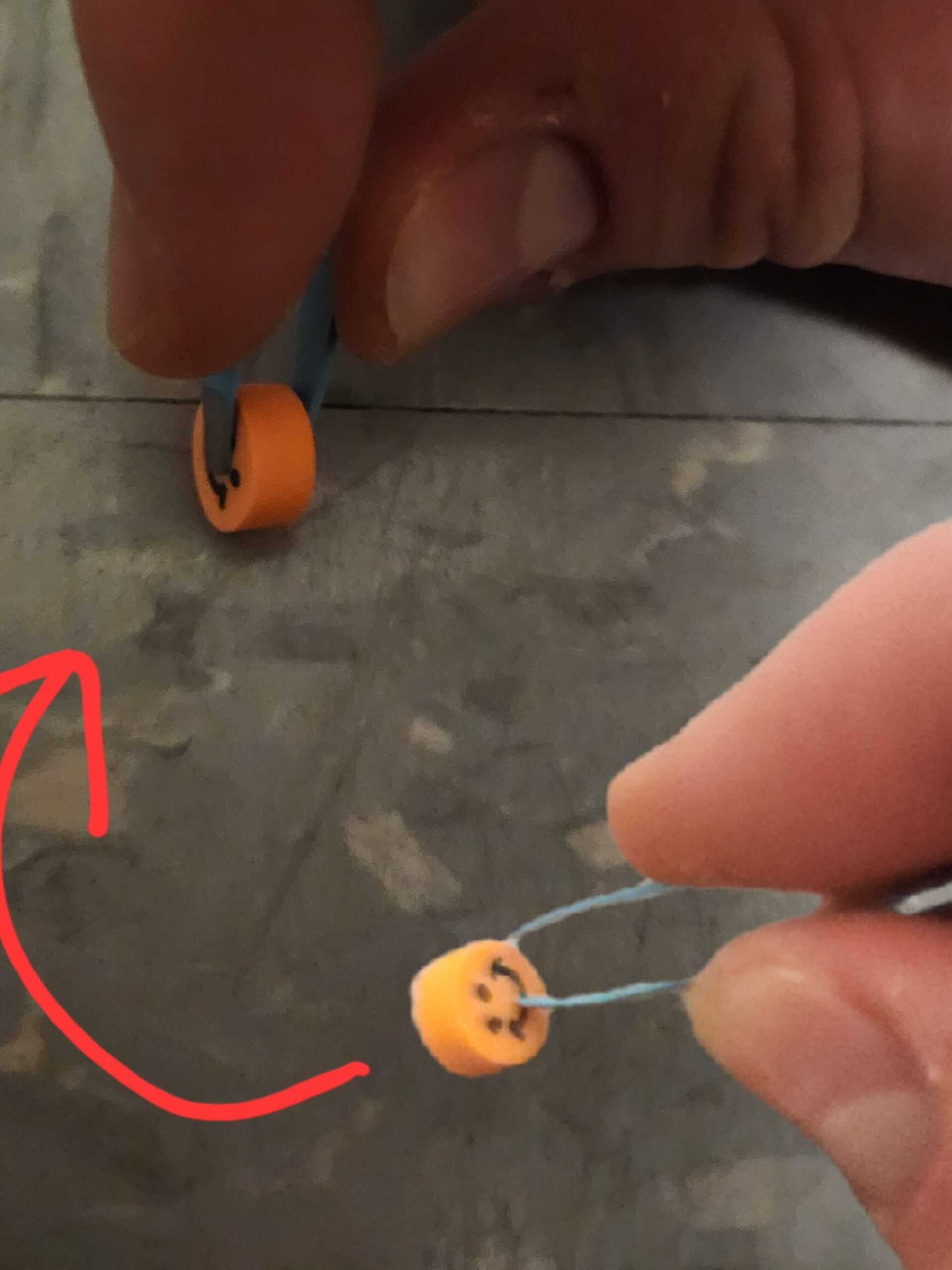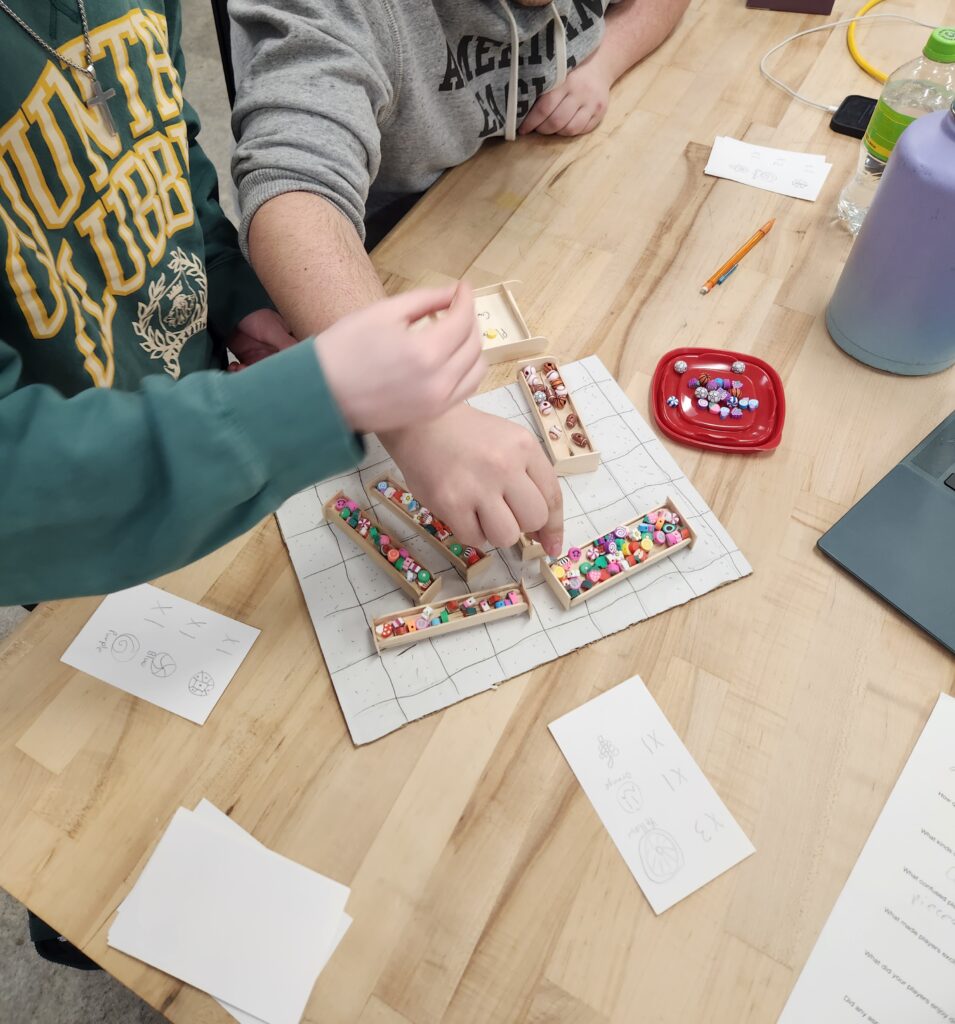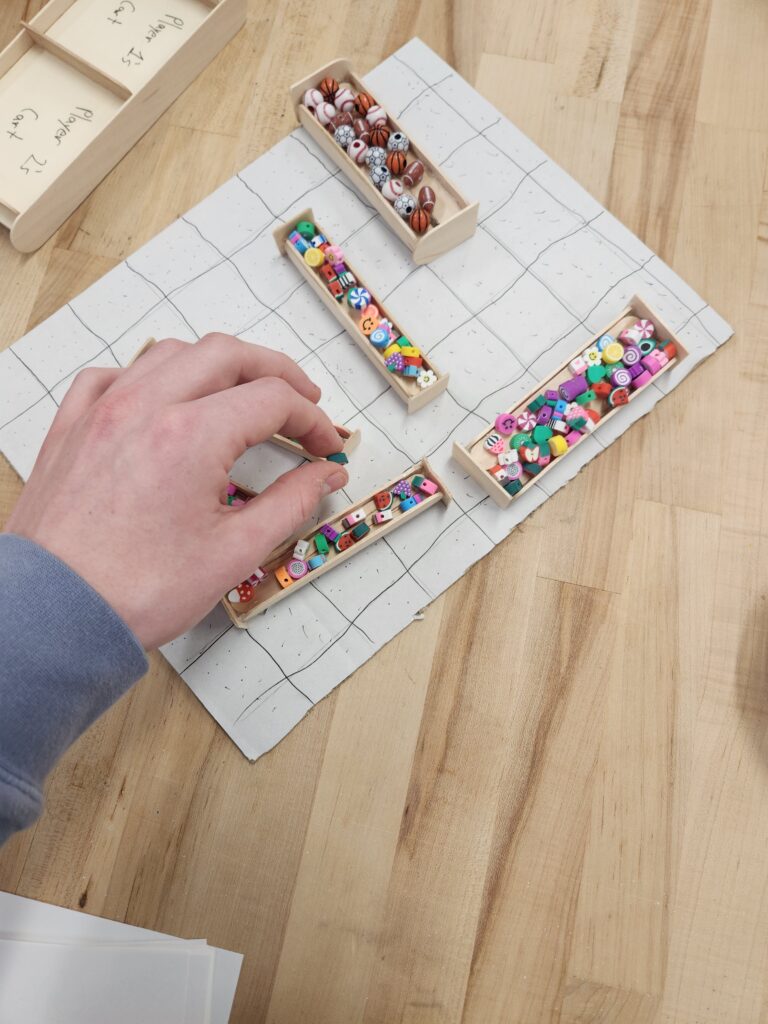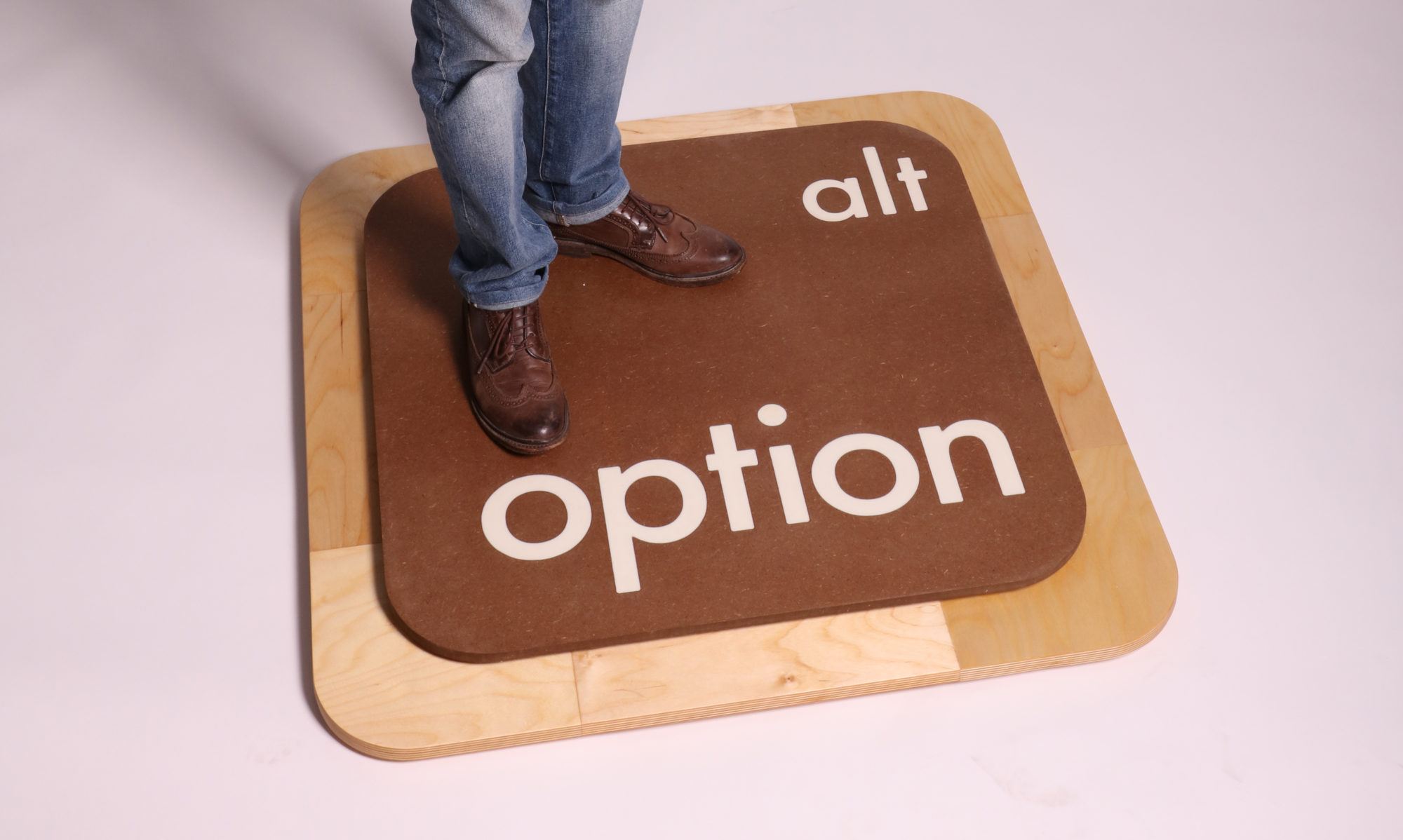Mother’s Wish (3 players)
Short Summary
This is an empathetic playing experience based on gathering groceries for your sickly mother. The game revolves around scoping out proper groceries on the shelves in order to add them to your cart. The first player to complete their shopping list and load up the cart wins the round, collecting the shopping list as a signifier. There are three rounds to each game, and whichever player has more shopping lists than the other wins. This game is for players who love competition, as well as quick reaction timing. This game also involves strict observation skills. Think of it as an Eye-Spy book, but you are competing against someone to find the hidden objects.
Design Process & Thought Process:
Iterative Design
I’ve had to think of ways to simplify the graphics of this game, in order to keep the players focused on the task at hand. I didn’t want to overcomplicate the design, so players aren’t distracted and are able to discern between items. For example, the setting of the game takes place in a store, so I designed a simple floor tile that doesn’t catch the players off guard.

Designing the cards were tricky, because I had to think of a way to efficiently convey what products I wanted the players to grab off of the shelves. The main challenge to this was the fact that there are some products that are the same, but different color.

In order to address this, I specified under the drawing what color was to be sought out.

Although the cards are simple, they give a general consensus of the card layout and design. Taking the final iteration to photoshop, I will be able to photograph the items onto the cards maximizing recognition.
The last design iteration were the shelves. I thought about making the shelves look more like shelves, each with layers of items. The problem with this design was the fact that it would be very hard not to knock the shelves over, and it would be very hard to pull the items off of the shelves. In order to fix this, I made the shelves more like bins instead of actual shelves:
Game Mechanics
There are two different types of player roles for the gameplay, which are the shoppers and store manager. There are two shoppers that are competing against each other. The players are pulling items off the shelves, trying to be the first to complete the shopping list. The shoppers use tweezers in order to pull the items off of the shelves into their carts, shown in the image below:

They will keep going down the list. The first shopper that finishes the list, with all of the corresponding items in their cart, collects the shopping list card which signifies two points. The list in which the shopper completed are two points. In a round, there are 3 shopping list cards during a game for the players to compete for. One card after the other. The max number of points to earn in a game is 6. If a player knocks items off of the shelves as they are trying to grab an item, that is a point deduction. The number of items that are knocked off of the shelf doesn’t matter, it is only a one-point deduction per round.
The Store manager oversees the game and keeps track of the scoring system. They do not directly play in the game, but act as a “boss” or “moderator” of the gameplay. For example, if a player scores a point, then it is the manager’s job to keep track of who is winning. The store manager reorganizes the shelves between rounds, sets up and stocks the shelves. They flip the grocery lists over, in order to signify when the shoppers must start shopping. They run the store.
Player Goals
The manager doesn’t have any real goal compared to the shoppers, who have a direct goal to win. The only main task of the store manager is to make sure the game is running efficiently, as well as restocking the shelves between rounds. This way, the items don’t run out as the shoppers grab them off of the shelves.
On the other hand, the goal of the shoppers is to collect the shopping lists, which signify points. As stated in the game mechanics, the most points you can score during a game is 6. With each card being worth 2 points, the players must complete their lists, collect the card and snag the points. In the end, whichever player has more points wins. The number of points can also be affected by whether the shopper has knocked over items which is a point deduction.
Gameplay Sequence
After the store manager stocks the shelves and the cards are in placement, the game is ready to commence. The Store manager will flip over the first card, which will have a list of items to take off of the shelves. As soon as the card is flipped over, both shoppers scurry around the store to pick the items off of the shelves. Once a shopper finds an item, they pick it off of the shelf with their tweezer and put it in the cart. They will keep going down the list. The first shopper that finishes the list, with all of the corresponding items in their cart, collects the card which signifies two points.
Once all 3 grocery list cards have been gone through, it is time to tally up who has earned the most points based on how many cards they have kept. If the player has knocked items off of the shelves, that is a single point deduction. This is one of the jobs of the store manager, making sure who is in the lead (point tracking). If by chance both shoppers have the same number of points and there is a tie, then both shoppers must compete an additional round to determine who is the final winner.
Player Interaction/Gameplay:


Game Board & Components
The game board – simple in design, allows the players to maintain focus on picking out the items. Since the board is simple, the colors of the items stick out, making it easier to differentiate between the groceries. This is what the game looks like set up:
As mentioned in the iterative design section on the shelving, I made sure that the shelves were more like bins. If I were to make the shelves stand up like typical store shelves, players would be more inclined to knock them over and scatter items everywhere.
Furthermore, a feature I added in the game was the ability of the manager to organize the shelves in any way they want on the game board. This allows the manager to not only control the flow of the game but potentially make things tricker or harder for the shoppers.
Tools
The two shoppers use a tweezer in order to pick the items off of the shelves. Players cannot use their fingers because the challenge of the tweezers makes it more interesting. Both shoppers have a shopping cart that they also put their groceries in. In the beginning of the game, the two players decide who is who (between players 1 and 2).
Rulebook & Playtesting
Playtesting Notes
- What questions did your players have?
- Some common questions that the players had were based on the rules, such as “What if you pick up and put back items?” or “Can I take from the other player’s bin?” Any of the questions were based on unspecifications that I will have to clarify in the rules, in order to prevent people from doing the wrong actions. Another question was “Am I allowed to block the other player?”
- How quickly did they learn to play?
- It didn’t take long for the players to catch on to the ruleset. I’d say that this game has one of the easier rulesets I’ve made but nonetheless needs improvement. The players were able to play the game and adapt, but they still ran into complications that I will have to personally look over.
- What kinds of interactions did the players have?
- This is a very competitive game, and the players were constantly at each other’s throat. From a direct interaction, the players clash tweezers and wrestle with pieces time to time, as well as striving to the first to earn points. However, not much talking is involved in the game, as players are dialed in to focus on what pieces to grab.
- What confused players?
- Players were less confused about the rules, and more confused about the pieces they had to grab. I’ve noticed that in the prototype, I did not do a good job of indicating what type of pieces they have to lookout for. This confused the players, as they sometimes grabbed the wrong pieces or mistakened items for something else.
- What made players excited?
- The excitement mainly derived from the bulk of the gameplay, where players were rushing to earn points. When the points were earned, it was rewarding to the players too, complimenting their quick-thinking and observation skills. The anticipation of the manager flipping over the card evoked excitement as well, as the players eagerly awaited their next challenge.
- What did your players enjoy doing?
- The players enjoyed using the tools (tiny tweezers and shopping carts) and competing with each other. They enjoyed navigating through the miniature store model, which gave them an environment to interact with.
- Did any aspect of the game frustrate players?
- I wouldn’t say so, but the players suggested a mechanic to make things easier for the playing experience. I think it was more about a factor that they wish was a part of the game rather than frustration. For example, they suggested a clock/bell that could be hit to indicate that they are done with the shopping list, in order to prevent frequent ties.
- What did your players learn/take away from your game? Was that what you intended?
- I’d say my players learned the aspects of keeping cool during a moment of chaos. This game really enforces the principles of maintaining composure and concentration, no matter how stressful the environment may be. This was sort of what I intended, since I was looking to create a fast-paced and competitive game.
- What is your plan to address player questions, confusion, and frustration?
- Just as I’ve tackled criticism in the past, I plan on addressing the confusion, questions and frustrations of players through communication and/or feedback. Through frequent playtesting, I expect players to tell me the things that are wrong with my game. There have been instances where I thought the game was perfect from the start, until players have exposed its flaws in rules. I’ll also have to read over the rules of my game and make extra clarifications and changes to better the playing experience.
- If your players didn’t get your intended message, what will you change?
- One thing I will point out is that this game is supposed to make the players feel empathy, as the premise of the game revolves around getting groceries for your sick mother. I don’t think the players understood that, at least I can do a better job at making that known. In order to fix this, I will add designs to the cards which will show a small picture of your mother asking for the specific groceries. This way, players will be reminded of their sick mother, making them more determined.
Game Reflections
Through the development of this game, I’ve spotted out a lot of design potential that can be put into a final iteration. This game can be polished, and rules can be specified in order to maximize gameplay. Photoshop will carry this game to victory, as item recognition will be much easier on the cards. Next time I will make sure to not only improve upon the graphics, but to word the rules better. I believe that I can definitely word things in order to help the players understand the mechanics further. Overall, both graphics and rule iterations can help me consider the players better and their playing experience.
